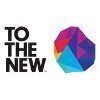Scrum Master and Manager
Scrum Master and Manager Interview Questions and Answers

Asked in Gammastack

Q. Knowledge Regarding SDLC? Risk management? What are types of project Planning? What are the Roles of a Project manager? Test of Fluent Communication Skills. Command over the process improvement and implementati...
read moreUnderstanding of SDLC, risk management, project planning, project manager roles, communication skills, process improvement, and Agile implementation.
SDLC involves phases like planning, analysis, design, implementation, and maintenance.
Risk management includes identifying, assessing, and mitigating risks to project success.
Types of project planning include waterfall, agile, and hybrid approaches.
Project manager roles involve leadership, communication, planning, and risk manage...read more
Asked in Logically Infomedia

Q. What are the key practices in Scrum?
Key practices in Scrum include daily stand-up meetings, sprint planning, sprint review, and retrospective.
Daily stand-up meetings to discuss progress and plan for the day
Sprint planning to define the work to be done in the upcoming sprint
Sprint review to demonstrate the completed work to stakeholders
Retrospective to reflect on the sprint and identify areas for improvement

Asked in Infosys

Q. What does a Scrum Master do on a day-to-day basis?
The day to day life of a Scrum Master involves facilitating daily stand-up meetings, removing impediments, coaching the team, and ensuring adherence to Scrum practices.
Facilitating daily stand-up meetings to keep the team aligned and focused
Removing impediments that are blocking the team's progress
Coaching the team on Scrum practices and principles
Ensuring adherence to Scrum ceremonies such as sprint planning, review, and retrospective
Collaborating with the Product Owner to p...read more

Asked in KPIT Technologies

Q. Why do we use SAFe?
SAFe (Scaled Agile Framework) is used to scale Agile practices across multiple teams and ensure alignment, collaboration, and delivery of value.
SAFe helps organizations scale Agile practices beyond individual teams to ensure alignment and collaboration across multiple teams.
It provides a framework for coordinating work, managing dependencies, and delivering value to customers more effectively.
SAFe includes roles, ceremonies, and artifacts that help organizations implement Agi...read more

Asked in TCS

Q. What are the Scrum Events?
Scrum events are structured meetings that facilitate collaboration, planning, and review in Agile project management.
Sprint: A time-boxed period (usually 1-4 weeks) where work is completed.
Sprint Planning: A meeting to define what will be delivered in the upcoming sprint.
Daily Scrum: A short daily meeting (15 minutes) for the team to synchronize activities.
Sprint Review: A meeting at the end of the sprint to showcase completed work to stakeholders.
Sprint Retrospective: A meet...read more

Asked in KPIT Technologies

Q. What are the differences between Scrum and Kanban?
Scrum is time-boxed with fixed iterations, while Kanban is continuous flow with no fixed time frames.
Scrum has fixed iterations called sprints, while Kanban has no fixed time frames.
Scrum focuses on completing a set amount of work within a sprint, while Kanban focuses on continuous delivery of work.
Scrum limits work in progress (WIP) to items in the sprint backlog, while Kanban limits WIP based on capacity and flow.
Scrum requires a defined team structure with specific roles l...read more
Scrum Master and Manager Jobs




Asked in TO THE NEW

Q. What are the Scrum ceremonies?
Ceremonies are regular events in Scrum framework to facilitate communication and collaboration within the team.
Ceremonies include Sprint Planning, Daily Standup, Sprint Review, and Sprint Retrospective
They help the team plan, track progress, review work, and continuously improve
Each ceremony has a specific purpose and timebox to ensure efficiency and effectiveness

Asked in Capgemini

Q. What is Scope Creep?
Scope creep refers to the gradual expansion of project requirements beyond the original plan, often leading to delays and budget issues.
Scope creep often occurs when stakeholders request additional features after the project has started.
Example: A software project initially planned to develop a basic app, but stakeholders keep adding new functionalities.
It can lead to project delays as teams struggle to accommodate new requests without adjusting timelines.
Effective communicat...read more
Share interview questions and help millions of jobseekers 🌟


Asked in KPIT Technologies

Q. What is your definition of ready?
Definition of ready is a set of criteria that a product backlog item must meet before it can be worked on by the team.
Definition of ready ensures that the team has all the necessary information, resources, and dependencies in place before starting work on a backlog item.
Criteria in the definition of ready may include detailed requirements, acceptance criteria, dependencies identified, and estimates agreed upon.
The purpose of having a definition of ready is to prevent interrup...read more

Asked in EPAM Systems

Q. What are the core values of Scrum?
The core values of Scrum are commitment, courage, focus, openness, and respect.
Commitment to achieving the team's goals
Courage to address challenges and conflicts
Focus on delivering high-quality work
Openness to feedback and continuous improvement
Respect for team members and their contributions
Interview Questions of Similar Designations
Interview Experiences of Popular Companies








Reviews
Interviews
Salaries
Users

















